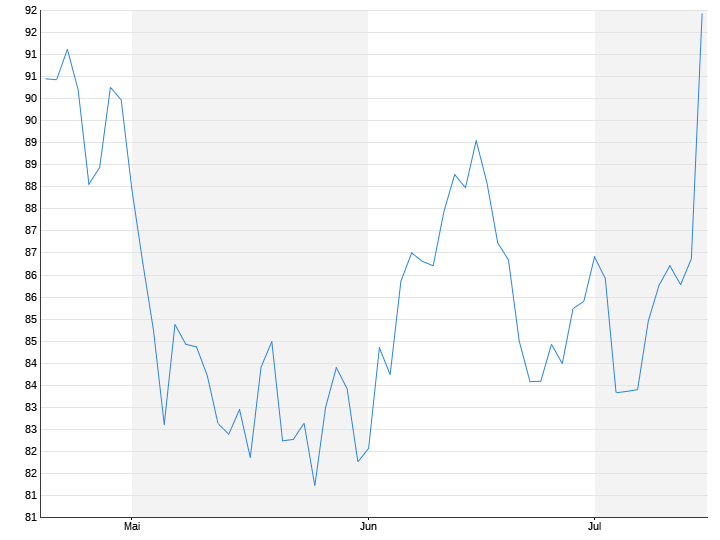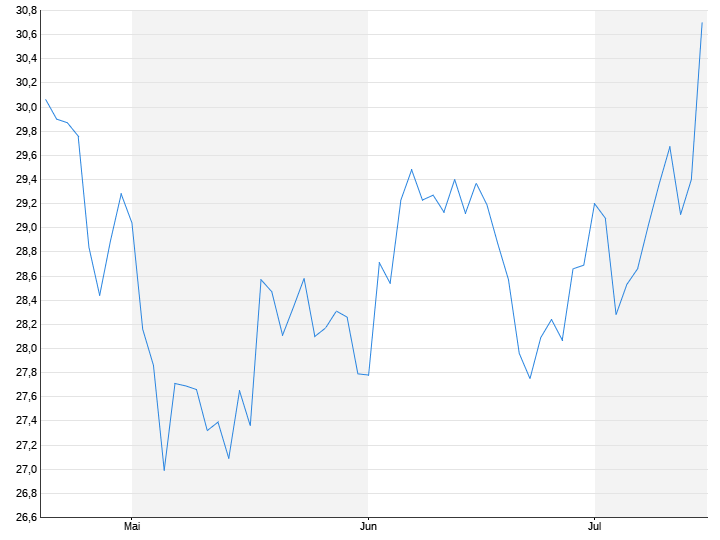Dow Jones closes in positive territory
Strong figures from major banks spread optimism
07/18/2023 10:37 p.m
Bank of America and Morgan Stanley can look forward to price jumps. The strong figures from the two financial institutions generally raise the mood on Wall Street. Retail sales, on the other hand, are disappointing.
Surprisingly strong figures from the two major US banks, Bank of America and Morgan Stanley, have given Wall Street another boost. The Dow Jones Index advanced again by 1.06 percent to 34,951.93 points after the recent rally. The broader one S&P 500 and the Index of the Technology Exchange Nasdaq each increased by about 0.7 percent to 4554.98 and 14,353.64 points.
“Big banks act as a macroeconomic temperature gauge and so far the big banks have satisfied many investors,” said Peter Andersen, founder of Andersen Capital Management. Higher interest income boosted the business of Bank of America and gave the institute a jump in profits of almost 20 percent in the second quarter. The stock put in 4.5 to.
Competitor Morgan Stanley also scored well with investors. The decline in earnings due to the slack in the merger business was less than expected. “The results appear to be much better than feared in a challenging environment,” said UBS analyst Brennan Hawken. In addition, the outlook brightened as business in investment banking picked up again, leaving the shares of MorganStanley by almost 6.3 percent climb. Mergers and acquisitions are increasing in sectors like financial services and energy, and the backlog in investment banking is already growing, CFO Sharon Yeshaya said.

Retail sales in the US initially caused disappointment in June. These increased by only 0.2 percent compared to May and thus fell short of the forecast of 0.5 percent. “The US buying mood is weakening somewhat,” explained Helaba expert Ulrich Wortberg. US consumers’ willingness to buy is being held back by the still high cost of living. However, falling energy prices ensured that the US inflation rate fell from 4.0 percent in May to 3.0 percent in June.
In addition, US companies surprisingly shut down their production in June for the second month in a row. The entire production – industry, utilities and mining together – shrank again by 0.5 percent compared to the previous month, as the US Federal Reserve announced. Economists surveyed by Reuters had expected stagnation.
The pending interest rate decisions by the US Federal Reserve and the European Central Bank also increasingly came into focus. After the biggest weekly drop this year, the dollar stable. The dollar index rose 0.08 percent to 99.96 digits, recovering slightly from its 15-month low. The dollar has been particularly troubled recently by speculation that interest rate hikes in the USA will soon come to an end. The US Federal Reserve has recently taken a break in the fight against high inflation after ten interest rate hikes in a row and has maintained the range of 5.0 to 5.25 percent. Financial markets are expecting the Fed, which is targeting inflation at 2.0 percent, to decide another rate hike at its July 26 meeting.
